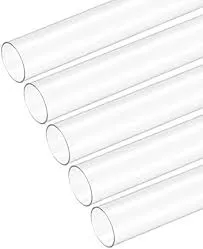gru . 25, 2024 02:00 Back to list
The Essential Guide to Industrial Pipe Fittings for Various Applications and Uses
Understanding Industrial Pipe Fittings Types, Applications, and Importance
Industrial pipe fittings are essential components in various piping systems across numerous industries. They are designed to connect, control, and change the direction of pipes, thereby playing a crucial role in fluid and gas transportation. Understanding the types of pipe fittings, their applications, and their importance can aid in better selecting the right fittings for a specific system.
Types of Industrial Pipe Fittings
1. Elbows Commonly used to change the direction of the pipeline. Elbows come in various angles, with 90-degree and 45-degree elbows being the most prevalent. They are vital in navigating around obstacles in piping layouts.
2. Tees Shaped like the letter T, these fittings allow for branching of the pipeline. A tee fitting can connect three pipes, facilitating the distribution of fluids to multiple areas. There are different types of tees, including equal tees and reducing tees, which accommodate pipes of varying diameters.
3. Reducers These fittings are used to connect two pipes of different diameters. A reducer can either be a concentric reducer, which maintains a central axis, or an eccentric reducer, which shifts the axis to one side. This adjustment is crucial in systems where flow rates must be controlled.
4. Caps and Plugs Used to seal the ends of pipes, preventing fluids or gases from escaping. Caps are typically used for the external ends of pipes, while plugs fill terminal openings. Both are essential for system maintenance and safety.
5. Couplings and Unions Couplings are fittings that connect two pipe ends together, while unions are used to join two pipes with the ability to be disassembled easily. These fittings are particularly vital for maintenance or adjustments in the system.
6. Flanges Flanged fittings are used to connect pipes or valves with bolts. They provide a strong mechanical connection and are often used in systems that require frequent disassembly and reassembly.
industrial pipe fittings

Applications of Industrial Pipe Fittings
Industrial pipe fittings are used in a wide range of applications across different sectors. In the oil and gas industry, for example, they are vital for transporting crude oil, gas, and other petrochemicals. The construction industry relies on pipe fittings for plumbing and HVAC systems, ensuring the efficient flow of water and air.
In the food and beverage industry, sanitary fittings ensure that the pipes that convey liquids are safe and free from contamination. Similarly, chemical processing industries rely on specialized fittings that can withstand corrosive substances. Moreover, in the automotive sector, pipe fittings are crucial for fuel and coolant systems, affecting vehicle performance and safety.
Importance of Quality in Pipe Fittings
The importance of quality in industrial pipe fittings cannot be overstated. Poor quality fittings can lead to leaks, which may result in safety hazards, environmental impacts, and financial losses. High-quality fittings made from durable materials, such as stainless steel or carbon steel, ensure longevity and reliability in piping systems.
Standards and certifications, such as ASTM and ISO, play a critical role in ensuring that pipe fittings meet necessary safety and performance guidelines. Regular inspection and maintenance of pipe fittings are also essential to ensure their effectiveness and longevity in a system.
Conclusion
Industrial pipe fittings are fundamental components in various piping systems, facilitating the efficient transport of fluids and gases. With a variety of types available, including elbows, tees, and reducers, it is crucial to select the right fittings for specific applications. The role of quality cannot be overlooked, as reliable fittings help to prevent leaks and ensure safety in industrial operations. As industries continue to evolve, the demand for high-performance pipe fittings will undoubtedly increase, pushing innovation and design improvements in this vital sector. Understanding the intricacies of industrial pipe fittings is key for engineers, contractors, and maintenance personnel alike in building efficient and safe piping systems.
-
PP U-channel: Chemical-Resistant, Lightweight & Durable
NewsAug.10,2025
-
Transparent PVC Pipe: Clear Flexible Tubing for Fluids
NewsAug.09,2025
-
Durable PP Rigid Sheet: Versatile & High-Quality Plastic Panels
NewsAug.08,2025
-
Premium Glossy PP Rigid Sheet – Durable & Versatile
NewsAug.07,2025
-
High-Quality HDPE Sheet | Durable Plastic Panels
NewsAug.06,2025
-
High-Precision PVC Rigid Sheets for Vacuum Forming | AI-Optimized
NewsAug.05,2025

